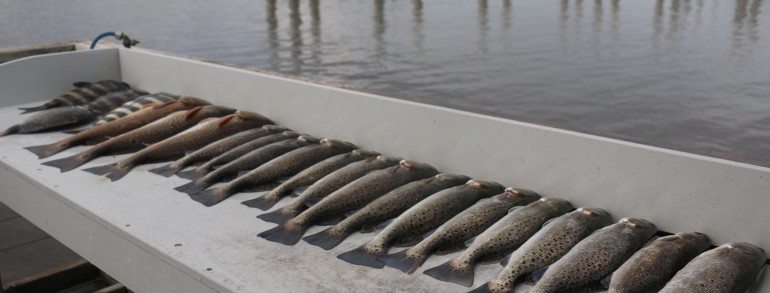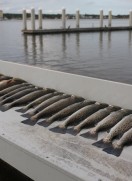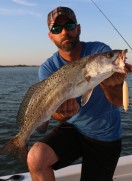I'm pretty stubborn in my fishing habits for the most part. Especially during the Summer months. This time of year, I tend to gravitate to pitching Sheepshead jigs tipped with live Shrimp almost 90% of the time. The problem with this is when I'm faced with bigger charter groups. Fishing jetties on the bottom with jigs as you could imagine generates a lot of snags. I recently decided to switch it up a bit and go back to an old school system, Slip Corking.
The advantage of using Slip Corks is 3 fold. 1) This takes snagging near completely out of the picture, and 2), It gives a live Shrimp a much more natural presentation. 3) Another major benefit Cork fishing has over jig fishing is it's inherent ability to cover more ground. Not only that but in a way that's less intrusive, IE, by having less of a boat presence spooking the fish. The boat is positioned up current while the floats ride down current up to a hundred feet or so. This is especially true in shallow water applications.
There are other factors that contribute to the effectiveness of fishing corks over bottom fishing. When jig fishing, you have to cast across the current to reach the rocks and then work the jig back across the all while holding bottom. There can be a couple of problems in this situation. The biggest arises when currents are intense. You lose significant control over the bait with a steady cross current putting pressure on your main line. In this situation, you lose control over the jig and this results with your bait not staying in the strike zone effectively. Or alternately, the current causes the jig to ride too high in the water column.
So, based on the above assessment, how does a Slip Cork get around this problem? First, boat positioning when fishing corks greatly favors heavy current fishing. It does so because instead of casting across the current and having to fight it, your float will instead use the current to fuel it's movement.The current goes from being the hurdle, to being the advantage.
Anchor the boat up current at the depth you intend to fish. Then set your bobber stopper to that corresponding depth. After that, put the reel in free spool and let the current carry the float. Setting for the correct depth can take a bit of tinkering. Here's how I go about it. I start off setting the bobber stopper at roughly a foot shallower than what my bottom machine is showing. So if my Garmin shows a depth of 10 feet, ill set the bobber stopper to 9 feet. The idea is that the bait will hover just over the bottom while the bait drifts. One can only estimate how many feet you have the bobber stopper set to and that's where the tinkering or adjusting comes into play. If the bottom I'm drifting is rocky, Ill often set the depth shallower than a foot, up to 3 feet potentially, depending on the size of the rocks or bottom peaks. Keep in mind that most of the time, having your depth off by a foot or two wont necessarily alter the effectiveness of your presentation. Especially when fishing jetties.
Pay attention to your bottom machine. more times than not, your bottom machine is painting a clear picture of where you should be setting you rigs depth. If you're seeing fish hovering in the column 5 feet off the bottom, try setting the depth of your bobber stopper to that depth. The bottom machine is an invaluable tool and this couldn't be more true then when it come to fishing Slip Corks.
Jacksonville Fishing charters. Jacksonville charter fishing. Guide fishing Jacksonville. Fishing guides Jacksonville. Charter fishing Jacksonville. Jacksonville Sport Fishing. Sport Fishing Jacksonville.





admin
Danny Pardue